Baccarat is a game of elegance and simplicity, yet its table layout can initially seem confusing to newcomers. Understanding the layout and the different sizes of baccarat tables can enhance your gaming experience. This guide will take you through the various aspects of a baccarat table layout, from the anatomy of a standard table to the differences between mini, midi, and full-size baccarat tables.
The Anatomy of a Standard Baccarat Table
A standard baccarat table is designed to accommodate several players and provide a clear distinction between different betting areas. Here’s a detailed look at the key components of a standard baccarat table.
Player and Banker Betting Areas
The primary areas on a baccarat table are the Player and Banker betting spots. Each player position around the table has a designated area for placing bets on either the Player or the Banker. These spots are usually labeled clearly and are where players place their chips.
Tie Betting Area
In addition to the Player and Banker betting areas, there is a section for placing bets on a Tie. This area is typically located between the Player and Banker betting spots. Betting on a Tie means you believe that both the Player’s and Banker’s hands will have the same total value.
Commission Box (if applicable)
In traditional baccarat, the casino takes a 5% commission on winning Banker bets. The commission box is where these commissions are recorded. However, this is not present in every variation of the game. Some modern versions, especially in online casinos, have eliminated this commission.
The ‘Tableau’ (Scoreboard)
Most casino baccarat table layouts feature a ‘tableau’ or scoreboard that tracks the outcomes of each hand. This helps players follow the game’s progress and potentially identify patterns. The tableau can be a physical board or a digital display in online and live dealer games.
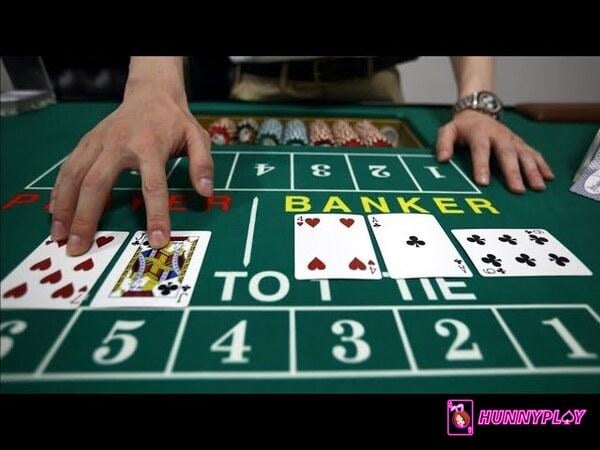
Mini-Baccarat vs. Midi-Baccarat vs. Full-Size Baccarat Table Layout
Baccarat tables come in different sizes, each catering to different types of players and casino environments. Understanding these variations can help you choose the right game for your preferences and bankroll.
Table Size and Player Capacity Differences
Mini-Baccarat
Mini-Baccarat is the most compact version of the game, typically seating up to 7 players. This version is popular in both brick-and-mortar and online casinos due to its fast pace and lower betting limits. The dealer handles all the cards, making the game quicker and more streamlined.
The baccarat table layout for mini-baccarat is designed for efficiency, with a smaller table and fewer players, which speeds up the game and reduces the minimum bet required to join. This makes it an excellent choice for beginners and those looking for a less intimidating environment.
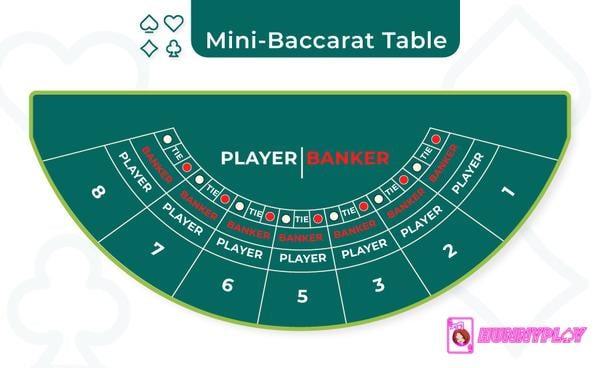
Midi-Baccarat
Midi-Baccarat offers a slightly larger and more engaging experience compared to mini-baccarat, usually accommodating up to 9 players. The midi-baccarat table layout maintains a balance between the intimacy of mini-baccarat and the grandeur of full-size tables.
This version often features more interaction, as players might handle the cards, adding an extra layer of excitement to the game. The betting limits are typically moderate, appealing to a wider range of players. Midi-baccarat tables are commonly found in both mid-stakes areas of casinos and online platforms, offering a diverse gaming experience.
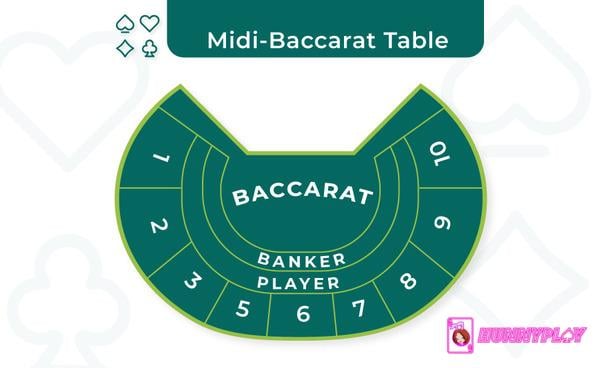
Full-Size Baccarat
Full-Size Baccarat, also known as ‘Big Table’ baccarat, is the most traditional and lavish version of the game, capable of seating up to 14 players. This version is typically found in high-limit areas of casinos and is characterized by higher betting limits and a more formal atmosphere.
The baccarat table layout in full-size baccarat is expansive, providing ample space for players to interact with the game. Each player has a designated area for placing bets on the player, banker, or tie options. The larger table and higher stakes attract seasoned players and those seeking a more sophisticated gaming experience. The dealer’s role is more prominent, often involving multiple dealers to handle the game smoothly.
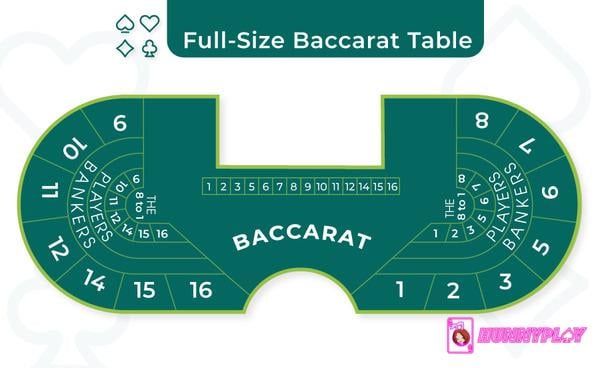
Variations in Betting Limits
The betting limits in Mini-Baccarat are generally the lowest among all baccarat versions. This means players can join the game with a smaller bankroll, making it an ideal choice for those who prefer lower-stakes gambling or are just learning the ropes of baccarat.
Midi-Baccarat offers a middle ground between the fast-paced, lower-stakes Mini-Baccarat and the high-stakes, formal Full-Size Baccarat. This version is often found in mid-stakes areas of casinos and provides a balanced experience with moderate betting limits. These moderate limits are suitable for players who are comfortable with risking a bit more than in Mini-Baccarat but are not ready for the high stakes of Full-Size Baccarat.
Betting limits at Full-Size Baccarat tables are significantly higher, with substantial minimum and maximum bets. This setup is designed for players with larger bankrolls who are comfortable with high-stakes gambling. The grandeur and exclusivity of Full-Size Baccarat attract seasoned players and VIPs, providing a sophisticated atmosphere where large sums of money are wagered.
Dealer vs. Player-Dealt Cards (Chemin de Fer)
In traditional full-size baccarat, especially the Chemin de Fer version, players take turns dealing the cards, adding a layer of interaction and strategy. In mini and midi-baccarat, the dealer handles all the cards, simplifying the game and speeding up the pace.
The difference between dealer-dealt and player-dealt cards significantly influences the overall dynamics and player experience of the game. In Chemin de Fer, the interaction between players and the added strategic element of dealing cards can make the game feel more engaging and personalized.
The responsibility of dealing adds a psychological aspect, as players must balance the roles of being both the dealer and the bettor, which can be both challenging and rewarding.
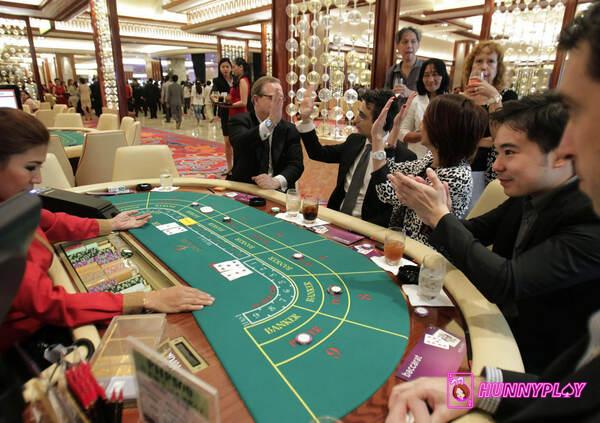
Baccarat Betting Options: A Closer Look
Understanding the different betting options is crucial for any baccarat player. Here’s a detailed look at the main bets and side bets available in the baccarat table guide.
Player Bet
A bet on the Player is straightforward. If the Player’s hand is closer to nine than the Banker’s hand, you win. The payout for a winning Player bet is 1:1.
Banker Bet
Betting on the Banker is often considered the best option due to its slightly better odds. If the Banker’s hand wins, you receive a payout of 1:1, but a 5% commission is usually deducted from your winnings.
Tie Bet
Betting on a Tie is riskier but offers a higher payout, typically 8:1 or 9:1. However, the house edge is significantly higher on this bet, making it less favorable in the long run.
Side Bets (if available)
Many baccarat variations offer side bets, such as Player Pair, Banker Pair, and Perfect Pair. These bets provide additional opportunities for big wins but come with higher house edges. It’s essential to understand the specific rules and odds of any side bets before placing them.
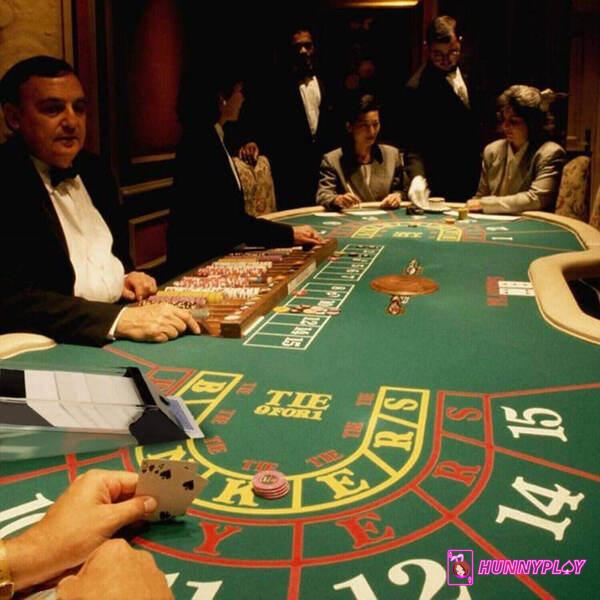
Tips for Navigating the Baccarat Table Layout
Navigating a baccarat table can be daunting for beginners. Here are some tips to help you get started and make the most of your gaming experience.
Baccarat Table Etiquette
Baccarat is known for its formal atmosphere, especially at high-limit tables. Here are some etiquette tips to keep in mind:
- Wait for the Current Hand to End: Before joining a table, wait for the current hand to finish.
- Don’t Touch the Chips: Once you’ve placed your bets, don’t touch your chips until the hand is resolved.
- Respect the Dealer and Other Players: Politeness and respect go a long way in maintaining a pleasant gaming environment.
Placing Bets and Understanding Payouts
Understanding where and how to place your bets is crucial. Ensure you place your chips in the correct betting area and familiarize yourself with the payout structure. This knowledge helps you make informed betting decisions and manage your bankroll effectively.
Managing Your Bankroll
Effective bankroll management is essential for long-term success in baccarat. Set a budget before you start playing and stick to it. Avoid chasing losses and know when to walk away, whether you’re winning or losing.
Virtual Baccarat Tables: The Online Experience
Playing baccarat online offers convenience and accessibility, with some differences compared to physical tables.
Similarities and Differences to Physical Tables
Online baccarat replicates the experience of playing at a physical table, with virtual betting areas and digital cards. However, the pace of the game can be faster, and you can play multiple variations from the comfort of your home.
User Interface and Betting Options
Online baccarat platforms provide user-friendly interfaces that make it easy to place bets, track game progress, and switch between different betting options. Ensure you choose a reputable online casino with a reliable platform.
Live Dealer Baccarat
Live dealer baccarat combines the convenience of online play with the immersive experience of a real casino. Professional dealers manage the game in real time, and you can interact with them and other players through a chat function. This option bridges the gap between virtual and physical gaming experiences.
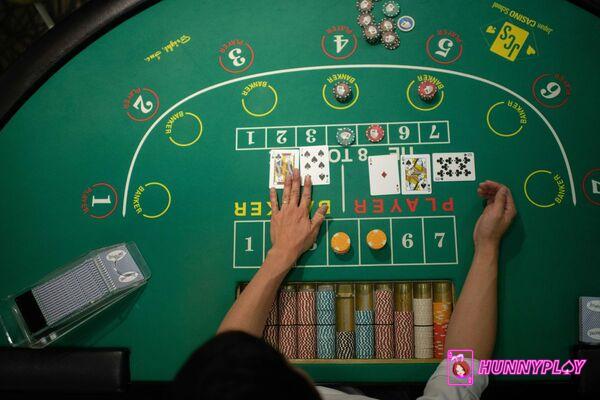
Conclusion
Understanding Baccarat table layout and the different variations of the game can enhance your gaming experience. Whether you’re playing mini, midi, or full-size baccarat, knowing where to place your bets and how the game flows is crucial. Whether you’re playing at a land-based casino or online, the key is to enjoy the game responsibly and make the most of your baccarat experience.
For a premier baccarat experience, check out HunnyPlay. With a wide range of baccarat variations and an intuitive platform, HunnyPlay provides everything you need to fully enjoy this classic casino game.





















